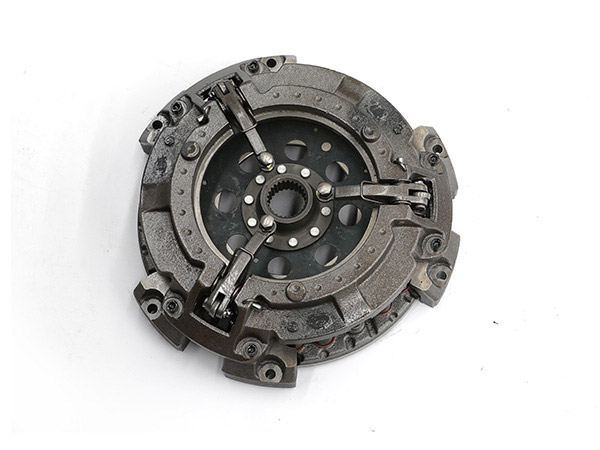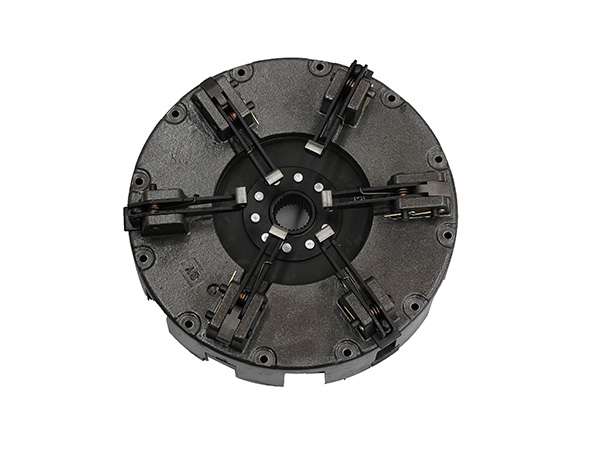A tractor clutch assembly is a crucial component in the powertrain system of a tractor or other agricultural machinery. It’s responsible for engaging and disengaging the power transmission between the engine and the rest of the drivetrain, allowing the operator to control the movement of the tractor.
How a tractor clutch assembly works

Clutch Disc: The clutch disc, also known as the friction disc, is a circular plate lined with friction material on both sides. It is located between the engine’s flywheel and the transmission input shaft. When engaged, the clutch disc is pressed against the flywheel by the pressure plate, transmitting engine power to the transmission.
Pressure Plate: The pressure plate is a heavy-duty spring-loaded component that applies pressure to the clutch disc. When the clutch pedal is released, the pressure plate clamps the clutch disc against the flywheel, allowing power to be transmitted from the engine to the transmission.
Flywheel: The flywheel is a heavy rotating disc connected to the engine’s crankshaft. It provides inertia and helps smooth out the engine’s power delivery. The clutch disc is mounted to the flywheel, and the pressure plate engages with it.

Release Bearing (Throwout Bearing): The release bearing is a component that engages with the fingers or levers of the pressure plate. When the clutch pedal is depressed, the release bearing moves the pressure plate away from the clutch disc, disengaging the clutch and interrupting the power transmission.
Clutch Fork: The clutch fork is a lever that is actuated by the clutch pedal through the clutch linkage. When the clutch pedal is depressed, the clutch fork pushes or pulls the release bearing, which in turn releases the pressure on the clutch disc.
…
For more detailed information on the working principle of the tractor clutch assembly, please click to visit: https://www.syclutch.com/news/working-principle-of-tractor-clutch-assembly.html


